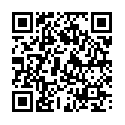According to survey data from Clutch, roughly 55 percent of businesses owned by millennials have their own mobile app. While many of these apps are meant to supplement an e-commerce store, SaaS, or other business model, for many fledgling companies, the app essentially is the business.
Because of this, app promotion has become more important than ever for companies of all sizes. Regardless of the function an app plays in your company’s business model, ensuring that your customer knows your app exists is crucial for your bottom line.The latest edition of the AppsFlyer Performance Index includes interesting data on several mobile app user acquisition trends, three of which I think are important for the upcoming year.
1. More Concerted Efforts Against Mobile Ad Fraud
Fraudulent app ad networks have consistently presented problems for app marketers, but the AppsFlyer report reveals that things are starting to trend in the right direction. In 2019, install share from fraudulent networks fell 60 percent, while cleanly-sourced app installs increased by 25 percent.Bad ad networks ultimately cause app marketers to waste their budget by allocating resources toward fake users. Inflated numbers give a false impression of app performance, and can completely throw off further optimization efforts.
As just one example, a post published on Medium reveals how deceiving a bad network’s retention rates can be.In the study’s numbers, retention initially appears quite strong, at 81% of all organic installs. However, digging into the data revealed that 90% of those installs were poached from organic traffic, revealing the retention rate at 47%.High retention numbers might make your marketing efforts look better. But anyone who is focused on getting the best results for her company will always want to dig deeper to make sure the numbers are actually legitimate.
2. Retargeting Users To Grow Stronger Customer Connections
While retargeting has been cited as an essential marketing tool for apps for quite some time, the AppsFlyer report makes it clear that this tactic is continuing to grow in relevancy. The number of apps running retargeting campaigns increased 57% year over year.
Despite this growth, however, some areas continue to lag behind.
For example, only about 15% of gaming apps run retargeting campaigns. In the marketing world, retargeting draws heavily from algorithms to put your ads in front of people who have previously used your app or visited your site. Retargeting is an opportunity to segment out your message based on behavior, where on your site they landed, how they got there, etc.
As Sparq Designs’ Adele Stewart explained in an interview with Fit Small Business, “Segment everything. Each specific visitor group is going to receive different messaging, different ads (served at different times throughout the day, month, YEAR!), and even different imagery. It’s necessary to get a good idea of what pages visitors engaged with. Those who visited the About Us page should be served an ad of general services. Visitors who reviewed a specific product page, should be served ads of what they looked like and similar imagery. If someone signed up for an account, show them what they’re missing – perhaps you offer 25% off if they follow through their purchase now. Give them something to come back to. Those who abandoned their cart should be served the exact product they left off on.”
Dig into retargeting if you haven’t already.
3. Working With Emerging Players
Finally, the report noted a marked increase in usage of several new platforms for app marketing. For example, the network Liftoff increased its app install contributions by 115%, while Snap generated 62% more installs in 2019 than in 2018.There is clearly a lot of potential in networks outside of Facebook and Google, it’s just a matter of finding a non-fraudulent, powerful one.
However, this can also influence a marketer’s willingness to more closely evaluate and work with emerging players in the app marketing world. Rather than be content to stick with the same platforms that have been delivering decent results up to now, become willing to form new collaborative partnerships that can fuel further growth.
Marketing an app isn’t easy, especially when there are literally millions of apps available for today’s smartphone users. But finding a good network to plug into, leverage retargeting and creating smart partnerships will give you a leg up.
Original website: http://bit.ly/2r49WAh



 1. Be social
1. Be social






